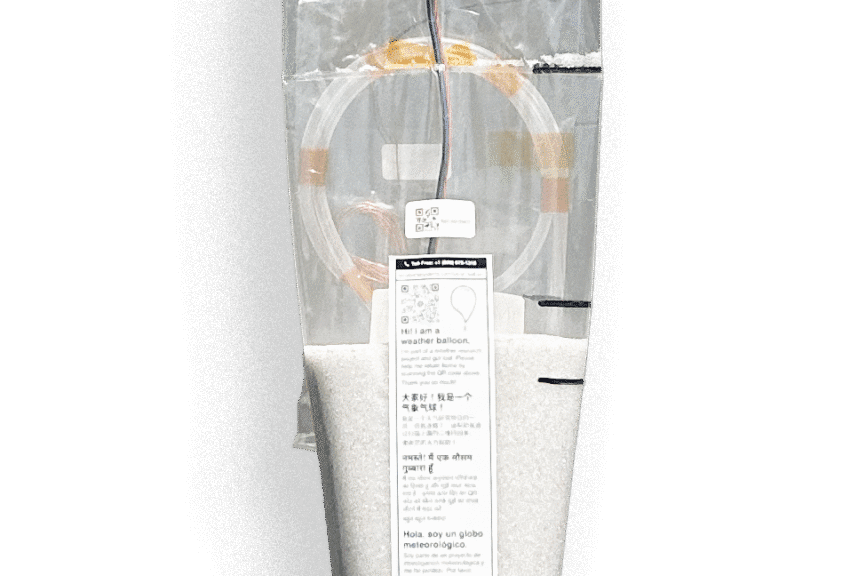
it wasn t space debris that struck A recent incident involving a United Airlines flight has revealed that a weather balloon, rather than space debris or other theories, was likely responsible for damaging the aircraft during its flight.
it wasn t space debris that struck
Incident Overview
On a routine flight, United Airlines Flight 1093 experienced an unexpected and alarming event when it struck an object mid-air, resulting in significant damage to the aircraft’s front window. Initial speculation surrounding the incident included a range of possibilities, from space debris to high-flying birds. However, as investigations progressed, the focus shifted to a more plausible explanation: a weather balloon.
Initial Theories and Speculation
In the immediate aftermath of the incident, various theories emerged regarding the nature of the object that struck the aircraft. The aviation community and the public alike were quick to speculate, with some suggesting that the damage could have been caused by:
- Space debris: Fragments from defunct satellites or spent rocket stages.
- Bird strikes: Collisions with birds, which are a known hazard for aircraft.
- Other airborne objects: This could include drones or other aircraft.
Each of these possibilities raised concerns about aviation safety and the potential risks posed by objects in the sky. However, the investigation led by the National Transportation Safety Board (NTSB) and the Federal Aviation Administration (FAA) would soon provide clarity.
Identification of the Object
As the investigation unfolded, Kai Marshland, co-founder of WindBorne Systems, a weather prediction company, became involved. He provided insights that would ultimately lead to the identification of the object as a weather balloon. In an email to Ars Technica, Marshland stated, “I think this was a WindBorne balloon.”
WindBorne Systems’ Involvement
WindBorne Systems specializes in the development and deployment of weather balloons designed to collect atmospheric data. The company had been monitoring its balloons in the vicinity of the incident. After learning about the potential connection to Flight 1093, Marshland and his team acted quickly.
At 11 PM PT on the Sunday following the incident, WindBorne Systems began its investigation. By 6 AM PT the next morning, they had submitted a preliminary report to both the NTSB and FAA, indicating that one of their balloons may have been involved in the incident. This proactive approach highlights the importance of collaboration between private companies and regulatory agencies in ensuring aviation safety.
Implications for Aviation Safety
The revelation that a weather balloon was likely responsible for the damage to Flight 1093 raises important questions about aviation safety and the management of airborne objects. While weather balloons serve critical functions in meteorology, their presence in airspace poses potential risks to commercial aviation.
Understanding Weather Balloons
Weather balloons are large balloons filled with helium or hydrogen that carry instruments to measure atmospheric pressure, temperature, humidity, and wind speed at various altitudes. They are typically launched twice daily from thousands of locations worldwide and can ascend to altitudes of over 100,000 feet. While they are essential for weather forecasting, their size and altitude can make them difficult to detect, especially by pilots.
The incident involving Flight 1093 underscores the need for better awareness and tracking of weather balloons and other high-altitude objects. As commercial air traffic continues to increase, the potential for collisions with such objects could rise, necessitating improved safety protocols and communication between meteorological organizations and aviation authorities.
Stakeholder Reactions
The response from various stakeholders has been one of concern but also of relief that the incident was not caused by more hazardous objects, such as space debris or a bird strike. The NTSB and FAA have acknowledged the importance of understanding the implications of this incident and are working closely with WindBorne Systems to gather more data.
Regulatory Perspective
From a regulatory standpoint, the FAA has emphasized its commitment to ensuring the safety of air travel. The agency has stated that it will review existing guidelines and protocols related to the management of high-altitude balloons. This may involve:
- Enhancing communication between meteorological organizations and aviation authorities.
- Developing better tracking systems for high-altitude balloons.
- Implementing stricter regulations on balloon launches in proximity to commercial flight paths.
The NTSB is also expected to conduct a thorough investigation into the incident, which may include interviews with the flight crew, analysis of flight data, and a review of the balloon’s trajectory. The findings from this investigation could lead to recommendations aimed at preventing similar incidents in the future.
Broader Context of Airborne Hazards
The incident involving Flight 1093 is not an isolated case. As air traffic continues to grow, the aviation industry faces increasing challenges related to airborne hazards. These hazards can include:
- Bird strikes: These remain one of the most common risks for aircraft, particularly during takeoff and landing.
- Drone activity: The proliferation of drones has raised concerns about their potential to interfere with commercial flights.
- Space debris: As the number of satellites in orbit increases, so does the risk of debris re-entering the atmosphere.
Each of these hazards requires ongoing research and collaboration between various stakeholders in the aviation and aerospace industries. The Flight 1093 incident serves as a reminder of the need for vigilance and proactive measures to ensure the safety of air travel.
Future Considerations
Looking ahead, the aviation industry must address the implications of this incident and consider how to mitigate risks associated with high-altitude objects. Potential strategies may include:
- Investing in advanced detection technologies that can identify and track weather balloons and other airborne objects.
- Enhancing pilot training programs to include awareness of potential hazards from high-altitude balloons.
- Encouraging collaboration between meteorological organizations and aviation authorities to improve communication and data sharing.
By taking these steps, the aviation industry can work towards minimizing the risks posed by weather balloons and other airborne hazards, ensuring safer skies for all travelers.
Conclusion
The incident involving United Airlines Flight 1093 has provided valuable insights into the complexities of aviation safety and the potential risks posed by high-altitude objects. The identification of a weather balloon as the likely cause of the damage serves as a reminder of the importance of vigilance and collaboration among stakeholders in the aviation and meteorological sectors. As investigations continue, the findings may lead to enhanced safety protocols and a better understanding of how to navigate the challenges posed by airborne hazards.
Source: Original report
Was this helpful?
Last Modified: October 21, 2025 at 9:35 am
1 views















